- Solutions
-
Products
-
Resources
Sales Automation: What It Is, How It Works, and What to Automate First by Kristi Campbell View all Blog Posts >Get the App, Get the Sidebar, & Get Your Trial Going HereUnleash limitless growth opportunities by partnering with Cirrus Insight.
- Pricing
Filter By:
- All topics
- Sales Intelligence
- Salesforce
- Sales Productivity
- Sales Strategy
- Sales Prospecting
- Book More Meetings
- Sales Activity Data
- Company News
- Sales Leadership
- Sales Metrics
- Team Scheduling
- Prospect Smarter
- AI
- Serious Insights
- Comparison
- Conversation Intelligence
- Sync To Your CRM
- Email Blast
- Email Campaigns
6 AI Tools to Add to Your Sales Process
 According to an old 2017 survey, only 7% of companies reply within 5 minutes. Fifty percent don’t respond even in 5 business days, and 35-50% of sales go to those who process requests first. Meanwhile, chatbots increase responding time by 77% (a little spoiler here). As a matter of fact, artificial intelligence is a wonderful technology to use for sales representatives. And chatbots are not the only tool we’re going to talk about. Today we’ll take a look at the arguments for and against AI in sales and give you 6 AI solutions you can use to boost your sales. Here we go!
According to an old 2017 survey, only 7% of companies reply within 5 minutes. Fifty percent don’t respond even in 5 business days, and 35-50% of sales go to those who process requests first. Meanwhile, chatbots increase responding time by 77% (a little spoiler here). As a matter of fact, artificial intelligence is a wonderful technology to use for sales representatives. And chatbots are not the only tool we’re going to talk about. Today we’ll take a look at the arguments for and against AI in sales and give you 6 AI solutions you can use to boost your sales. Here we go!
What is so good in AI for sales?
Since we’re presenting AI tools as something that can help you, we’d like to clarify how exactly they will assist your sales.
Sales process automation
First of all, AI technology can cover most of the repetitive tasks and free up your team some time for those which require a “human hand”. For instance, you won’t need to answer masses of identical questions your clients frequently ask you while still keeping in touch with them. Let alone all of the scheduling and reporting part of your work.
Faster decision making
Artificial intelligence can not only be your assistant but also your adviser. Thanks to its data processing capabilities, you no longer need to burn the midnight oil analyzing heaps of information you get to take the next step in your negotiations with the customer. You get a comprehensive analysis of your sales processes and recommendations on how to better them so that you can make informed decisions. No more lottery or cartomancy.
Better user experience
Do you remember how you had to keep everyone's child's name in mind to stay connected and sell after? Now you have just not to forget the names of your children. AI can process a lot of data and use it at the right moment with the right person and for the right purpose. And since customers appreciate a special approach to their persona, using personal details like their birthday or favorite restaurant may drastically increase their user experience (for instance, you can schedule the meeting in the place they like or congratulate them on the special day they shared about before). So, AI remembers everything, and you can use it.
In addition, as we already mentioned, some AI tools can reply to clients’ messages while you’re busy with another task, another client, or if the questions a customer has don’t require a sales representative personally. Thus, no one will drop out because of the long response time.

What’s not so good About AI?
We praised artificial intelligence as best we could. And for good reasons, of course. However, even a great tool can be useless or even harmful if we don’t use it properly. And what any sales representative has to remember about AI - it’s not a sales representative. So, using AI doesn’t mean you don’t have to work or double-check the work your AI tool does. The rule of thumb when it comes to anything produced by artificial intelligence is to check it twice. First for clarity and coherence, because remember, it’s a machine and not a human producing these sentences. And second, for factual accuracy. AI does not know how to fact check. So any numbers of specific information you see generated needs to be double and triple checked to ensure accuracy.
Artificial intelligence uses all information it gets, and in the manner it was programmed to do, so mostly we’re talking about the action patterns. And sometimes, it won’t work for a certain situation. That’s why we can’t fully rely on AI to solve the clients’ problems, for example. The bot can get a person wrong in an unfamiliar case and provide an unsuitable answer.
AI tools you can use to boost your sales
So, automation, user experience, decision making…great. But what to use to get it all? As promised, we’ve prepared a list of AI-powered tools to help you with different sales processes. Behold, human, your AI sales army.
Chatbots
Since you had a spoiler, there's no shock we mentioned them first. Chatbots, such as AI Agents, use ready-made responses to satisfy the client’s minimum communication needs and give them answers to frequently asked questions. In addition, a chatbot is a good way to collect information about your customers and process it afterward.
You can hire developers to build you a chatbot from scratch or use special no-code platforms, like ChatBot or HubSpot Chatbot Builder. Then it can be integrated into your website or application.
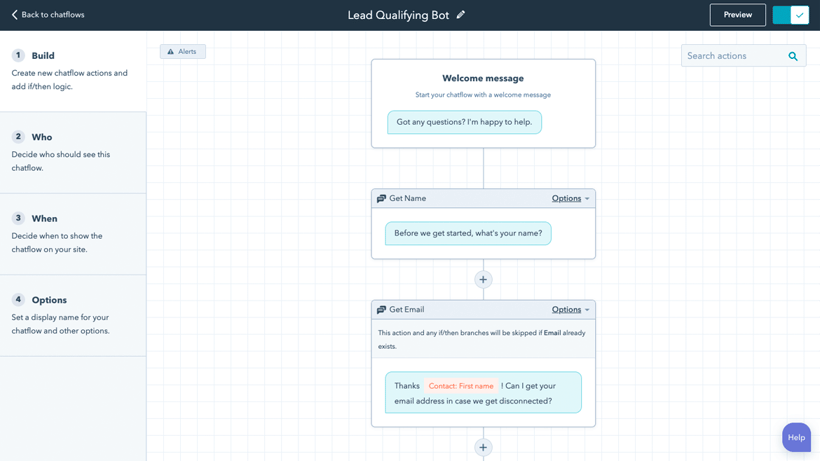
Some chatbots like Amelia can not only learn some patterns but also study your customer behavior and provide them with more human-like conversations.
AI email assistant
The AI email assistant is a must-have for those who are tired of scheduling meetings themselves, answering a lot of emails, or sorting out their inbox. This tool can have different features depending on the particular software. And the features may include:
- Analyzing the message history and sending a personalized response
- Sending reminders about upcoming events and deadlines
- Automatically forwarding emails to more qualified in a particular question colleague
- Providing customers with the required information about the product
- Turning emails into tasks and meetings
- Writing emails
Some of the examples are Lyne, which can analyze your message history and client’s LinkedIn profile to generate personalized cold emails, Lavender, which advises you on how to improve outreach emails, and Flowrite, your writing assistant you can use as a Google extension.
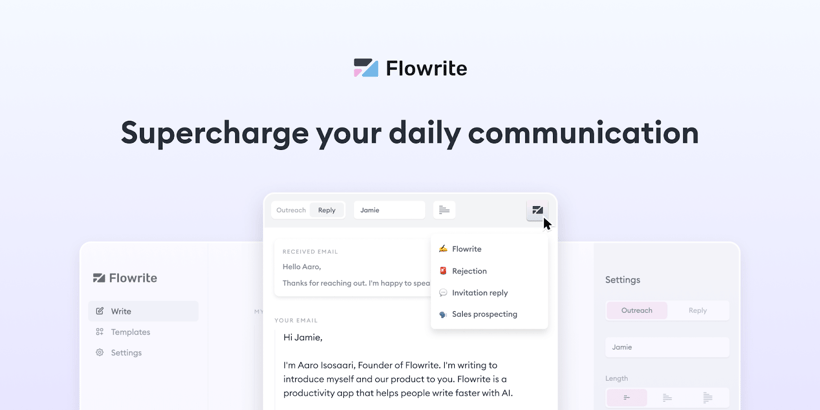
AI sales assistant
AI sales assistant or AI virtual sales assistant is software that sales representatives can use to automate their tasks. We mainly talk about such of them as scheduling meetings, storing information, answering emails, data entry, pipeline management, and all that jazz. The number and kind of tasks may differ because it’s mostly up to a certain piece of software.
For instance, AI-powered sales assistant Edward can be customized in accordance with scenarios you use in your work. It can save all phone numbers you dial, remind you about upcoming meetings every Monday, or ask you to give insights after every phone conversation. You can integrate Edward with CRM or databases you use to let it access all data and provide you with comprehensive reports.
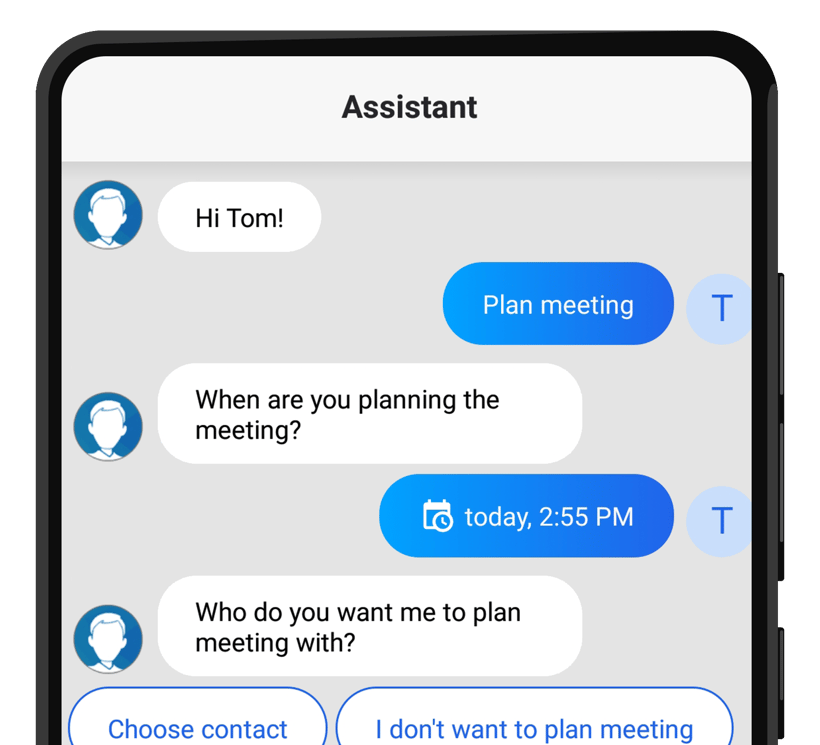
Sales analytics software
Analytics is an essential part of sales. A sales representative needs a deep understanding of what he does, how he does it, and what leads to good results. Without analysis, it’s impossible to determine which sales pipeline stage requires changes.
Sales analytics helps sales reps track their workflow and analyze which actions promote sales. AI-powered analytics also provides you with comprehensive insights into activities and their results. Moreover, it can identify a critical moment in your sales cycle where you’re more likely to win or lose.
One of the examples of AI-powered analytics is DealCode, which you can also integrate into your HubSpot or Pipedrive-based platform. 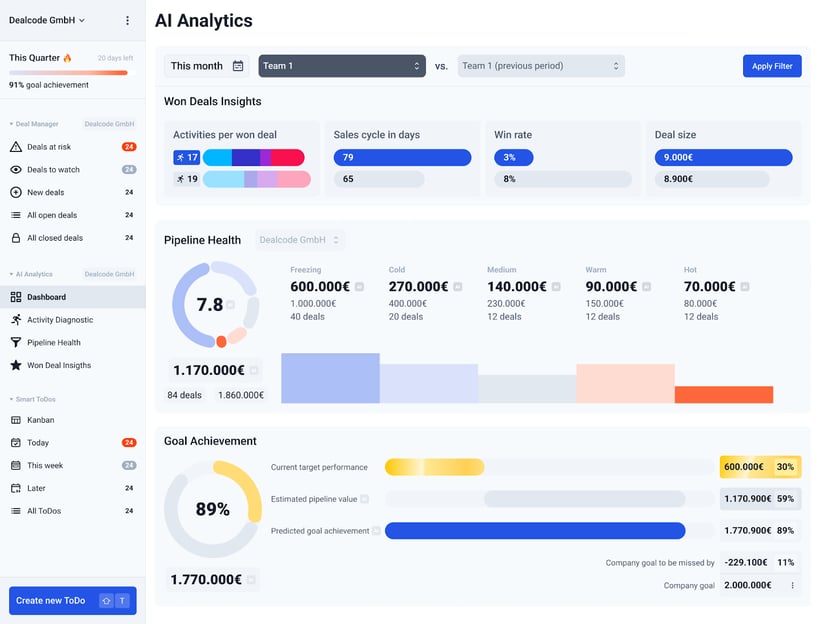
Sales forecasting tool
Predictable analytics got way far, and some forecasting tools might be beneficial to boost your sales or prevent their loss. For instance, we’ve already mentioned how AI-powered software can detect critical moments in your sales process, but that’s not the only way AI can save you a client.
Some platforms, like Salesforce, use artificial intelligence to predict possible churns before clients drop out. Processing and analyzing the information on how a customer interacts with the brand, this tool can highlight which of them needs more attention and has a bigger risk of falling off.
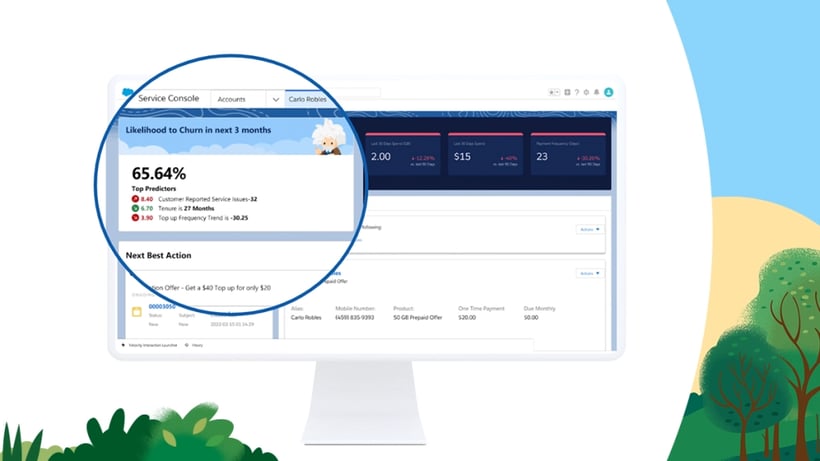
AI-powered CRMs
And this one comes at the top of the list ( being, in fact, at the bottom). The thing is that most CRMs can already have some of the above-mentioned AI tools inside of them so that sales representatives don’t have to search for separate software.
For instance, Cirrus Insight can help you automate scheduling meetings, emailing your clients, and other actions you take at different touchpoints in your sales cadence while giving you a comprehensive analysis of them and their effectiveness. It will also automatically capture every prospect’s action, like opening certain emails, or clicking particular links in your content, to give an idea of who and how you can attract to turn them into loyal clients.
How do you start?
This age-old question - how to start? In fact, getting any new tool requires just a few simple steps:
- Understand why you need the respective tool
- Decide on what exactly you need it for
- Choose the most convenient option
You can even take a Generative AI course to learn all about generative AI, the different tools available, and how they work.
We hope this article gave you the key to at least two of them, and we wish you luck in figuring out which AI-powered software is the best option for you.

.png?width=1268&height=1772&name=Sidebar-C%20(1).png)
